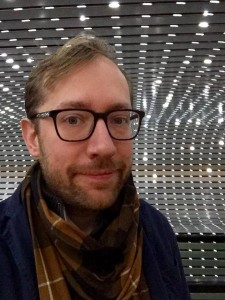On Place: Erik Moe
Place shapes our lives in unseen ways every day. I’m especially interested in how choices made in the distant past shape our present day landscape, affect our emotional well-being, our psychology, and the choices we make about how to live our lives. By extension, the choices we are making today are changing the shape of lives in the distant future. This is the main idea I explore in my hyperlocal sci-fi utopias project Future Cartographic Society, with which I am using stories, illustrations, and shared experiences to ask, “what will your neighborhood look like in 200 years?” For that project and other writings of mine, I’ve developed a sort of personal cosmology of places I’ve known.
Minneapolis
The place that shaped my formative understanding of the world was the Minneapolis that existed in the 1980s and 1990s. How did it come to be? 200 years prior it had been wild prairie along the Mississippi and Minnesota rivers, a place the Dakota people called bdote, or “the conflux of waters at the center of the world.” The United States chose to break treaties with the Dakota in order to colonize this place. Industrialists built railroads, grain mills, and factories. In 1883, the voters of that city had the foresight to set aside the most beautiful lakes, streams and land for public parks. Economic tumult in northern Europe brought my great-grandparents there to farm, or to build a new life in the new city rising. The streets were layed out in a logical grid. The houses were set back to allow grand views of the prairie horizon and an urban forrest. The wealth of this new city was often used for public good. It was channelled in to arts and culture, into public works. Museums, theaters, warehouse-sized coffeeshops, record stores, and easily accessible all-ages clubs echoing with punk, grunge, and folk and hiphop sprouted up. This became my playground.
Philadelphia
It wasn’t until I moved to Philadelphia in 2001 that I began to understand just how different place can be, and the psychological effects of those differences. William Penn’s plan for what is now Center City Philadelphia was had been laid out in 1682 and aimed to embody Quaker values of “religious, racial, and gender equality.” Those values felt present in the city in 2001, but so did the city’s long history of corrupt politics and troubled race relations. Infrastructure was crumbling. Vines and overgrowth crowded out streets and sidewalks. Poverty and rubble blanketed vast sections of the city that I rarely took the opportunity to explore. Still, punk bands, DJs, and art galleries and community-based performance artists were thriving. Often they worked and performed in the basements and grand halls of institutions of religious tolerance and ethnic solidarity build more than 200 years prior.
Chicago
My time in Chicago was brief, but affected me deeply. I devoured books on its history, which I read in cafes and on long walks by the lakefront in the summer. These included: Devil in the White City; Boss: Richard J. Daley of Chicago; and Jimmy Corrigan, the Smartest Kid on Earth. It felt in some ways like like the Minneapolis of my youth had grown up, been complicated, remixed, and exaggerated to the scale of Batman’s Gotham. Trains meandered slowly past second-floor living rooms where family dramas and loneliness were on display for all who could afford a C.T.A. fare. The open wounds of redlining gave a visceral feel to ethnic and racial segregation from one neighborhood to the next. The city’s relentless grid stretched to a horizon where it comforted me to know that it eventually faded out to the same ocean of prairie grass that the Minneapolis of my youth was adrift in.
D.C.
D.C. is the jigsaw puzzle I’ve come to love over the past decade. I’ve taken meandering walks and bike rides through nearly all of its corridors and neighborhoods. Forgotten alleys. Distant traffic circles that only locals confidently name when giving directions. The crumbling goat paths of Rock Creek Park. In planning the capital city in 1791, Piere L’Enfant borrowed from classical ideals and philosophies of landscape, including the Gardens of Versailles. As a result, in the width of the streets, the placement of buildings, gardens, circles and monuments, one can absorb the philosophical ideals of French aristocracy and its relationship to the American revolution. The plan is sterilized, tamed, symmetrical, militarized, but also clean, elegant and poetic. Meanwhile, most of modern D.C. lies beyond L’Enfant’s plan. If you cross Florida Avenue to the north or the Anacostia River to the south you can feel a change in the attitude of those who directed the bricklaying. Practical, working class values often perched houses wherever it made sense. Grids, street names, standards and planning came later on. Wars and riots and jazz and funk pumped through these veins and arteries. Today, it’s all one D.C. woven together by culture and memory. Seamlessly stitched to some eyes.  Hopelessly tattered to others. It’s the place I’ve slowly, carefully, grown comfortable calling home.
Hopelessly tattered to others. It’s the place I’ve slowly, carefully, grown comfortable calling home.
About the “On Place” Series
In honor of my first poetry collection–I Have Conversations with You in My Dreams, in which most of the poems engage with place in some way–I have asked other writers, authors, and poets to compose blog posts about the effects of place on their own work. To enter a contest for a free copy of the book, please leave a comment on any of the blog posts in the series. One winner will be selected at the end of February and one at the end of March. If the winner already has the book, he or she may select a different book from my collection.
For the schedule of blog posts, please see this page.
Leave a Reply